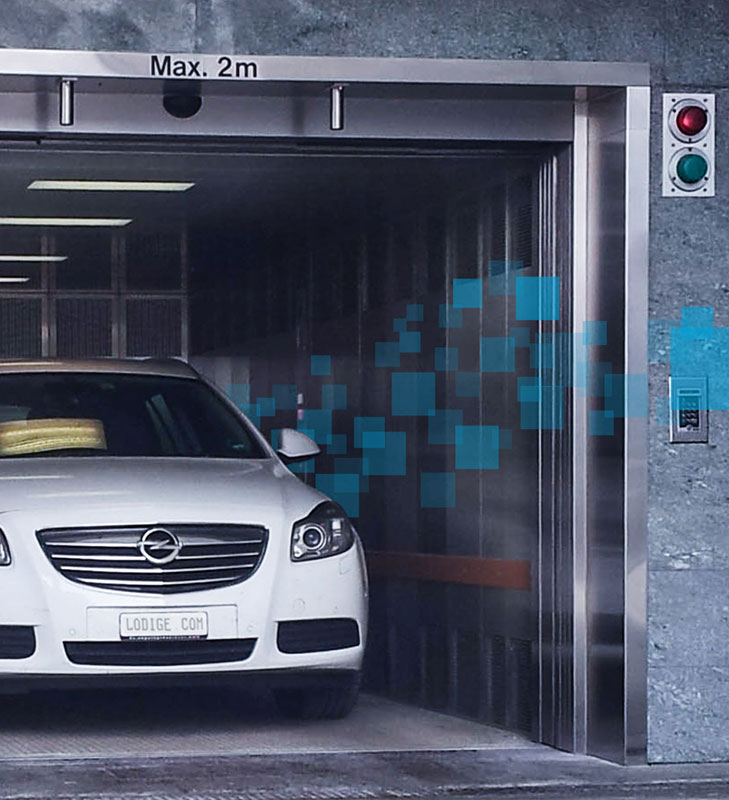Daily maintenance and care of Car Elevators are essential to ensure their safety and reliability. The following are the key components and their maintenance points that need to be focused on:
1. Drive system
Key components: motor, reducer, drive shaft, chain or wire rope.
Maintenance points:
Check whether the motor runs smoothly and whether there is abnormal noise or overheating.
Lubricate the reducer and transmission parts regularly to ensure that there is no jamming or wear.
Check whether the tension of the chain or wire rope is appropriate and whether there is any breakage, wear or corrosion.
Make sure all connecting bolts are tightened to prevent loosening.
2. Guide rail system
Key components: guide rail, slider, roller.
Maintenance points:
Check whether the surface of the guide rail is smooth and whether there is any deformation or rust.
Clean up dust, oil or other foreign matter on the guide rail and keep it clean.
Check the wear of the slider or roller and replace it if necessary.
Ensure that the gap between the guide rail and the elevator car meets the design requirements.
3. Braking system
Key components: brakes, brake pads, limit switches.
Maintenance points:
Check whether the brakes are sensitive and reliable to ensure quick response.
Measure the thickness of the brake pads and replace excessively worn parts in time.
Test the function of the limit switch to ensure that it can be accurately triggered in an emergency.
4. Control system
Key components: control cabinet, button panel, sensor.
Maintenance points:
Check whether the electrical components in the control cabinet are working properly and clean the dust.
Test the sensitivity of the button panel to ensure that the operation signal is transmitted correctly.
Calibrate sensors (such as position sensors, weight sensors) to avoid failures due to errors.
5. Safety protection devices
Key components: speed limiter, buffer, safety clamp.
Maintenance points:
Check whether the speed limiter can accurately detect overspeed and trigger the protection mechanism.
Test the performance of the buffer to ensure that it can effectively absorb the impact force during impact.
Verify whether the safety clamp is sensitive and perform functional tests regularly.
6. Car and platform
Key components: car frame, floor, guardrail.
Maintenance points:
Check whether the car frame is deformed or the weld is cracked.
Clean the floor and guardrail to ensure that there are no sharp objects or debris that affect the use.
Check whether the guardrail is firmly fixed to prevent loosening or falling off.
7. Hydraulic system (applicable to hydraulic car elevators)
Key components: hydraulic pump, cylinder, pipeline, oil tank.
Maintenance points:
Check the oil level and quality of the hydraulic oil, and replenish or replace it if necessary.
Check whether the cylinder and pipeline are leaking.
Clean up impurities in the oil tank to prevent blockage.
Test the pressure output of the hydraulic pump to ensure that it meets the design requirements.
8. Electrical system
Key components: cables, terminals, distribution boxes.
Maintenance points:
Check whether the cable sheath is damaged or aging.
Tighten the terminals to prevent poor contact due to looseness.
Test the circuit breakers and relays in the distribution box to ensure that they operate reliably.
9. Environmental factors
Maintenance points:
If the elevator is installed outdoors, special attention should be paid to waterproof, dustproof and anti-corrosion measures.
Regularly check the drainage system of the elevator shaft to prevent water accumulation from affecting the equipment.
10. Regular professional inspections
In addition to daily maintenance, it is recommended to regularly invite professional technicians to conduct comprehensive inspections, including load testing, performance evaluation and troubleshooting.
Comply with local regulations and standards to ensure that the elevator meets safety certification requirements.
The daily maintenance of car elevators needs to start from multiple aspects such as mechanical, electrical, and hydraulic, focusing on core components such as drive systems, braking systems, and safety protection devices. Through regular inspections, cleaning, lubrication and testing, the life of the equipment can be effectively extended, the failure rate can be reduced, and the safety of users can be guaranteed. If any abnormality is found, a professional maintenance team should be contacted in time for processing.











